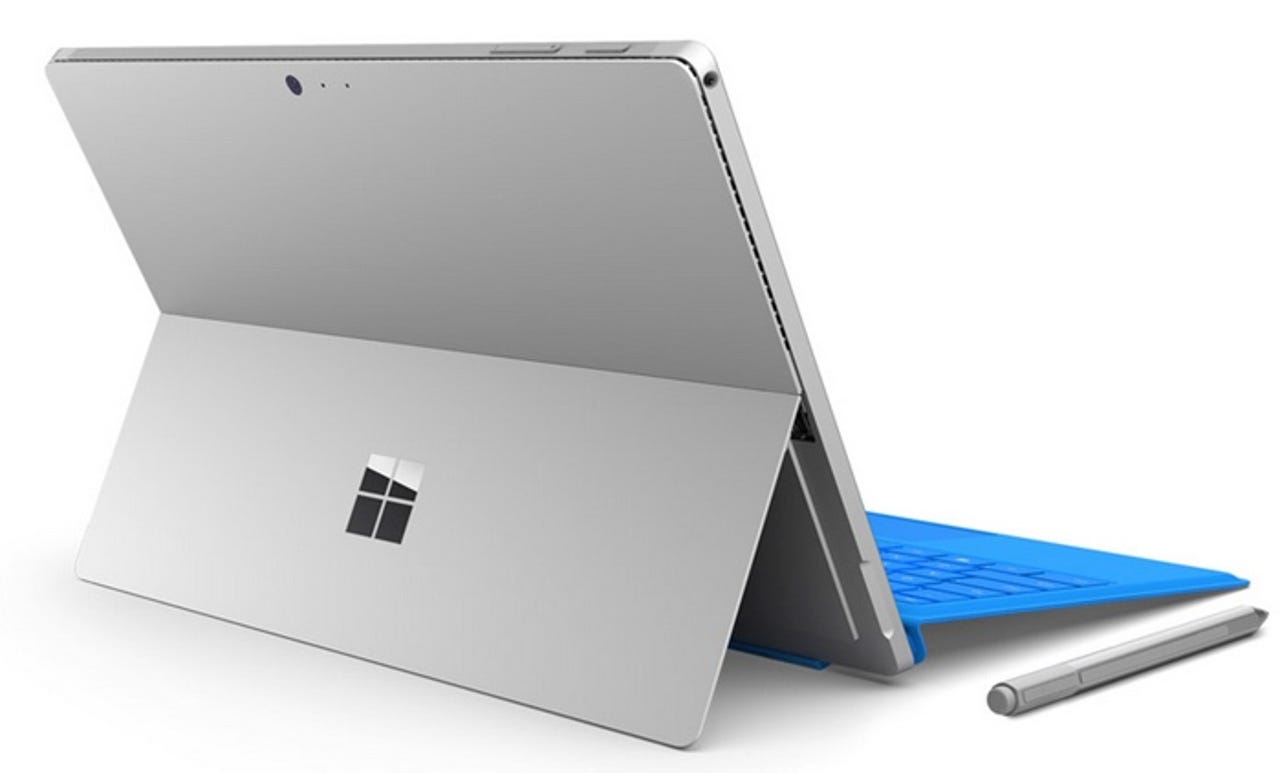Performance peek: Living with the base Surface Pro 4 and Core m3


Research for the best 2-in-1 device solution that meets my needs continues, after living with a Microsoft Surface Pro 4 over the last two weeks. Still in the running is the Dell XPS 12 and iPad Pro, but neither is available yet for testing.
As I've noted prior, my computing needs are relatively meager.
I can work on anything from a tablet to an Atom-based PC to a Chromebook because I generally live in a browser all day for both content creation and consumption. I really only need "extra" horsepower for a few podcast recording and editing sessions. Nope, I don't use (or need to use) Photoshop, play demanding games on my computers or run many Windows apps.
That's why I opted to buy the base $899 model of the Surface Pro 4 with Intel Core m3 processor and 4 GB of memory. I would have preferred 8 GB of RAM but Microsoft doesn't offer that as an upgrade to the Core m3 model.
Surprisingly, the lowest costing Surface Pro 4 with Windows 10 is handily meeting my needs, even with the fanless Core m3 inside. The experience is much better than on my other PC, which is a $229 HP Stream 13 with a 2.17 GHz Intel Celeron N2840 processor.
Of course, it's not as speedy as the Core i5 Surface Pro 4 configuration either. How does it compare?
Without the Core i5 version in hand -- I can't buy them all! -- I decided to run benchmarks on the Core m3 model and compare to them to Microsoft's mid-range Surface Pro 4 using the testing data that Ars Technica shared when reviewing the $1,299 edition of Microsoft's tablet that can replace a laptop.
Long story short: You will sacrifice a noticeable amount of performance and you won't gain any additional battery life choosing the Core m3 model, but you will save a few hundred dollars. And if your main computing activities are similar to mine, the base Surface Pro 4 just might fit the bill.
Note that Geekbench scores are for multi-core tests and higher numbers are better. All Javascript tests were run in Microsoft Edge; higher scores are better for Octane but lower for SunSpider and Kraken.
As you'd expect, the Core i5 version scores better than the Core m3: You can expect around 30 percent greater performance if you step up from the base Surface Pro 4 model.
Do you need to?
I don't. Even when running Eclipse -- a big hog of an IDE -- for developing Java apps, the Core m3 version of the Surface Pro moves along quickly enough. It also handles 1440p YouTube videos. For all of my other activities, the experience is far better than on my old HP Stream 13. Of course, that's a $229 device so it's to be expected.
Featured
Microsoft does offer a Core i5 Surface Pro 4 with the same 4 GB of memory and 128 GB on-board storage as the Core m3 model and it's only a $100 price difference.
If you're going to run full, semi-intensive apps on a regular basis, that $100 is likely well worth it. The only reason to jump to the $1,299 model is to double your storage and memory. For most average, everyday mainstream tasks though, $899 is all I needed to spend. And I'm betting that many needs of most other Windows 10 users can do the same.
I'm about halfway through my return period on the Surface Pro 4 so until Dell and Apple release the other "contenders" I'll stick with Microsoft's latest 2-in-1 hybrid.